Why do I heart blueberries? Because they are an excellent source of antioidants. It's a blue food. What does the blue stuff in there give you? A megawhopping 30%+ of your daily alotted dosage of Vitamin C, ~20% magnesium, 15% dietary fiber, a dallop of ~10% Vitamin E all for that one cup serving to hand you ~80 calories. It's an anti-aging food, gives healthy memory, keeps skin wrinkle free. In a recent study on blueberries, it was found they are highest foods for eliminating free radicals.
According to WHFoods: "Packed with antioxidant phytonutrients called anthocyanidins, blueberries neutralize free radical damage to the collagen matrix of cells and tissues that can lead to cataracts, glaucoma, varicose veins, hemorrhoids, peptic ulcers, heart disease and cancer. Anthocyanins, the blue-red pigments found in blueberries, improve the integrity of support structures in the veins and entire vascular system. Anthocyanins have been shown to enhance the effects of vitamin C, improve capillary integrity, and stabilize the collagen matrix (the ground substance of all body tissues). They work their protective magic by preventing free-radical damage, inhibiting enzymes from cleaving the collagen matrix, and directly cross-linking with collagen fibers to form a more stable collagen matrix.
Now if that isn't cool, I don't know what is. They went on to state:
"While wine, particularly red wine, is touted as cardioprotective since it is a good source of antioxidant anthocyanins, a recent study found that blueberries deliver 38% more of these free radical fighters. In this study, published in the Journal of Agriculture and Food Chemistry, researchers found that a moderate drink (about 4 ounces) of white wine contained .47 mmol of free radical absorbing antioxidants, red wine provided 2.04 mmol, and a wine made from highbush blueberries delivered 2.42 mmol of these protective plant compounds."
So what's not to love?
So what's not to love?
Growing them isn't difficult if you have a good bead on things.
Blueberries lack abundant root hairs and have shallow, underdeveloped roots concentrated in the top 14 inches of soil. As a result, regular watering and thick mulch are critical to keep down weeds. A very acid pH is necessary for the plant to extract iron and nitrogen from the soil. Most blueberry woes are caused by pH stresses. Plant 2 year old bushes. When your plants arrive, do not put them in water. Follow the directions and heel in until ready to plant. Adding beneficial mycoorrhizal fungi to the root system will increase yield.
Low bush varieties are grown primarily in New England. High bush throughout the US and the rabbiteye only in the South and West. Lowbush and rabbiteye requireanother variety for cross-pollination, highbush types don't but yields increase with cross-pollination.
To encourage root grown, remove all blossoms for a full 2 to 3 years. The delayed harvest will reward you with higher yields and healthier plants. Blueberries mature at about 50 to 60 days from pollination. From areas prone to late spring frosts, blueberries are a good choice, with strong frost resistance. If your soil is sufficiently acid and well draining, consider adding blueberries to your landscape as easy, low care plants that provide fresh fruit yearly and beautiful red foliage in the fall.
Blueberry bushes should be planted in full sunlight for maximum fruit production. Set out plants as early in the spring as possible. Plant bushes one to two inches deeper in the soil than they were in the nursery, six to eight feet apart, in rows spaced eight to ten feet apart. After plants have been set in the holes, fill the holes three-fourths full with soil mixture, and then flood the hole. After the water has drained, fill in the holes with soil and tamp it down.
They need full sun away from other plants and away from paths, roads and driveways as to not disturb the plants. pH should be around 4.0 to 5.6. About a month after setting out plants, apply one-half to one ounce of 10-10-10 (one to two ounces of 5-10-10 or equivalent) in a band around the base of the plant. In following years, increase rate of fertilizer by one to two ounces (of 10-10-10 or equivalent) per year until mature. When mature, blueberry bushes require about one-half pound of 10-10-10 (or equivalent) per year applied in April. In larger plantings, 40 to 50 pounds of actual nitrogen should be applied per acre.
Mulching the plants with clean straw, rotted sawdust, pine needles, shredded oak leaves, or wood chips will help conserve moisture as well as aid in weed control. A three to four inch layer of the above materials should be suitable. Generally, grass is allowed to grow between the rows of bushes, as long as the grass can be mowed frequently.
Mature blueberry bushes require one to two inches of water each week for best growth and productivity, especially during the harvest season. Blueberry bushes, especially young ones, suffer starvation if weeds or lawn are allowed to grow too close. Blueberry roots are close to the soil surface and need to be protected against competing weeds. Mulching is the recommended method of weed control around plants.
Pruning is the most important aspect of blueberry culture. Annual pruning is necessary to invigorate the bushes, encourage annual fruit production, and prevent the bushes from overbearing. Until the bushes reach maturity (at about eight years old) remove only dead, broken, short or weak shoots. On mature bushes remove one-third of the oldest shoots each year, as well as any broken or diseased branches. Prune in late winter or early spring before growth begins.
Flower buds are produced on the end of a shoot's growth. The flower buds are plump and rounded, leaf buds are small and pointed. Each flower bud may produce a cluster of five to eight berries. If all flower buds are left on, too many berries will be produced and many will be small and worthless. Also, short, thin shoots will grow resulting in poor fruiting wood for the following year's crop. Bushes need little pruning during the first two or three years after planting; only short, weak twiggy growth need be removed.
After two summers in the field, all the plants should be ready to prune for a small crop (1/2 to 1 pint per bush). Remove the thin, twiggy growth and concentrate the potential crop on a small number of stout, fruiting shoots. By limiting the cropping to only the strong shoots, the bush will continue to grow rapidly. A heavy crop at this time dwarfs the bush.
After the fourth summer in the field, some canes may show a weakening due to heavy bearing. From this time on, the first step in pruning is to remove canes which have only small weak, fruiting twigs. They may be cut to the ground or to a strong side shoot near the ground. This will stimulate the sprouting of new canes from the base, which keeps a plant relatively "young." It also allows adequate sunlight to penetrate the bush and promote the setting of fruit buds.
With enough sunlight, the new canes will start producing fruiting laterals in the second year at a relatively low level in the bush and will be able to develop a large zone of fruiting wood in the third and fourth years. In a dense, crowded bush a new cane will take three or four years to produce nothing more than a tuft of fruiting twigs at the very top of the bush.
With enough sunlight, the new canes will start producing fruiting laterals in the second year at a relatively low level in the bush and will be able to develop a large zone of fruiting wood in the third and fourth years. In a dense, crowded bush a new cane will take three or four years to produce nothing more than a tuft of fruiting twigs at the very top of the bush.
The number of old canes to be removed depends on the rate of growth over the past several years and varies considerably over six years old; it may be necessary to remove two canes annually due to changing growth rates.
After removing the older canes, the small twiggy growth is eliminated in favor of the stronger shoots. A limited amount of twiggy growth may be left in the lower portion of the bush. At this level shading is not a factor, and the fruit production from these twigs will add to the total crop.
Blueberry bushes are often weakened by: overbearing due to improper pruning, poor soil drainage, insufficient fertilizer, drought injury, crowding, scale injury, and grubs feeding on the roots. After the undesirable conditions have been corrected, it is possible to rejuvenate the plants by removing 1/3 to 1/2 of the old bush. This is accomplished by making large cuts at ground level. The remaining portion of the plant is allowed to bear heavily. The remaining old canes are removed the following spring.
Birds are a major problem with blueberry growing. Bushes often must be covered with netting to protect developing berries from birds. The major insect pests on blueberries are apple maggot, fruit worms, and Japanese beetles. The major diseases are mummy berry, twig blights (caused by several different fungi), and viruses.
Disease prevention is a good rule to follow when growing any small fruit. With blueberry growing, the following cultural practices will help prevent serious problems with most diseases.
Plant disease resistant varieties when possible. Purchase healthy plants.
Plant disease resistant varieties when possible. Purchase healthy plants.
Regular pruning helps to increase production, removes diseased plant parts, increases air circulation within the plants, and helps initiate fruit bud formation.
Prune out all diseased and insect-infested wood. Remove any wood that is broken or damaged. All diseased wood should be burned to prevent reinfestation of healthy plants. Keep plants free from weeds and debris. Rake under the bushes.
Disease Symptoms
"Mummy berry" is the most serious blueberry disease in Massachusetts. It is a fungus which first appears on newly emerging stems and flower clusters causing them to blacken and die. Later, spores infect blossoms. Developing fruit become tan and hard. These "mummified" berries eventually fall to the ground. Fungal spores overwinter inside the mummified berries. Removing infected berries is essential in preventing the disease from reoccurring. Raking and shallow cultivating between plants helps remove mummified berries. Applying 50 percent urea prills in the spring reduces spores from the mummified berries thereby reducing infections on plant growth.
"Mummy berry" is the most serious blueberry disease in Massachusetts. It is a fungus which first appears on newly emerging stems and flower clusters causing them to blacken and die. Later, spores infect blossoms. Developing fruit become tan and hard. These "mummified" berries eventually fall to the ground. Fungal spores overwinter inside the mummified berries. Removing infected berries is essential in preventing the disease from reoccurring. Raking and shallow cultivating between plants helps remove mummified berries. Applying 50 percent urea prills in the spring reduces spores from the mummified berries thereby reducing infections on plant growth.
"Fusicoccom (Godronia) canker" begins on plant parts near the ground, and appears as small reddish spots on the canes, often around a leafscar. These spots enlarge, forming a bullseye pattern. Fusicoccum cankers eventually girdle canes causing wilting and die-back.
"Phomopsis twig blight" causes symptoms very similar to those caused by Fusicoccum canker. Spores from infected plant parts are released in the spring and infect smaller twigs. Flagging and dieback follow initial twig infections. Leaf spots as well as crown infections can also occur.
Planting blueberries in optimal sites and proper pruning practices help to prevent these diseases. Winter cold encourages both Fusicoccum and Phomopsis. Practices which reduce winter damage, such as fertilizing in spring rather than fall, will decrease chances of encountering these diseases.
"Phomopsis twig blight" causes symptoms very similar to those caused by Fusicoccum canker. Spores from infected plant parts are released in the spring and infect smaller twigs. Flagging and dieback follow initial twig infections. Leaf spots as well as crown infections can also occur.
Planting blueberries in optimal sites and proper pruning practices help to prevent these diseases. Winter cold encourages both Fusicoccum and Phomopsis. Practices which reduce winter damage, such as fertilizing in spring rather than fall, will decrease chances of encountering these diseases.
"Anthracnose" is often a problem on developing fruit. This fungus also overwinters in diseased twigs, spurs, and stem cankers. The spores are spread by rain and wind. Infected fruit bear bright pink spore clusters. Proper pruning practices help control this disease.
"Botrytis" causes rotting on ripening fruit under moist conditions. Encouraging good air circulation and frequent picking reduce this problem.
"Botrytis" causes rotting on ripening fruit under moist conditions. Encouraging good air circulation and frequent picking reduce this problem.
Nutritional problems: Often, blueberry leaves show a yellowing, or chlorosis, especially between the leaf veins. This is usually a result of the blueberry roots being unable to take up iron from the soil. This "iron deficiency" is more often than not related to soil pH, or acidity. Blueberries should be grown in a pH range of 4.2 to 5.0. Above pH 5.0 the plants show this typical deficiency symptom. If your plants show yellow leaves (as described above), please have your soil tested to determine if the problem is pH related.
Other Problems
Problem: The leaves on my blueberry bushes are turning yellow.
Cause: Interveinal yellowing (chlorosis) of blueberry leaves is most often caused by iron deficiency. When the soil pH is too high, blueberry roots cannot take up iron, and the plant appears to be iron deficient. Have your soil tested for pH level before you apply iron. Often, correcting the pH level is all that's needed.
Problem: The leaves on my blueberry bushes are turning yellow.
Cause: Interveinal yellowing (chlorosis) of blueberry leaves is most often caused by iron deficiency. When the soil pH is too high, blueberry roots cannot take up iron, and the plant appears to be iron deficient. Have your soil tested for pH level before you apply iron. Often, correcting the pH level is all that's needed.
Harvesting
Highbush blueberries are often harvested too early. Leave them on the bush for 5 to 10 days after they turn blue. Berries should be harvested at two to three day intervals to discourage Japanese beetles, other insects, and fruit rots from entering ripening fruit. Pick directly into the storage bowl or containers so that as little as possible of their protective wax is removed. The more wax, the longer shelf life.
Highbush blueberries are often harvested too early. Leave them on the bush for 5 to 10 days after they turn blue. Berries should be harvested at two to three day intervals to discourage Japanese beetles, other insects, and fruit rots from entering ripening fruit. Pick directly into the storage bowl or containers so that as little as possible of their protective wax is removed. The more wax, the longer shelf life.
High Bush (vaccinium acorymbosum)
Bluecrop
This one can yield up to 20 pounds per plant, 4' to 6', drought resistant. Zones 4-7
Blueray
Yields up to 20 pounds, very sweet, 4'-6', great ornamental. Zones 4-6
Bluetta
Yields up to 20 pounds of fruit per plant., 3' - 5', good ornamental due to low stature and scarlet foliage. Zones 5-7.
Up to 20 pound yield. May need extra pruning dur to heavy set, very tart until 60% of fruit is ripe, 5'-7', good ornamental. Zones 4-7
Hardy blue
Small berry with superior flavor.
Northblue






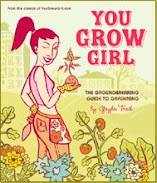


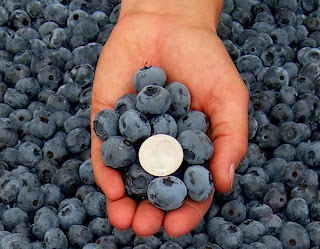
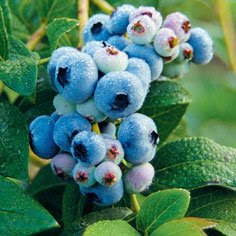

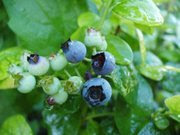

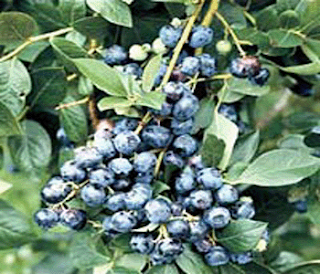


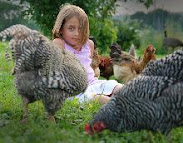
0 comments:
Post a Comment